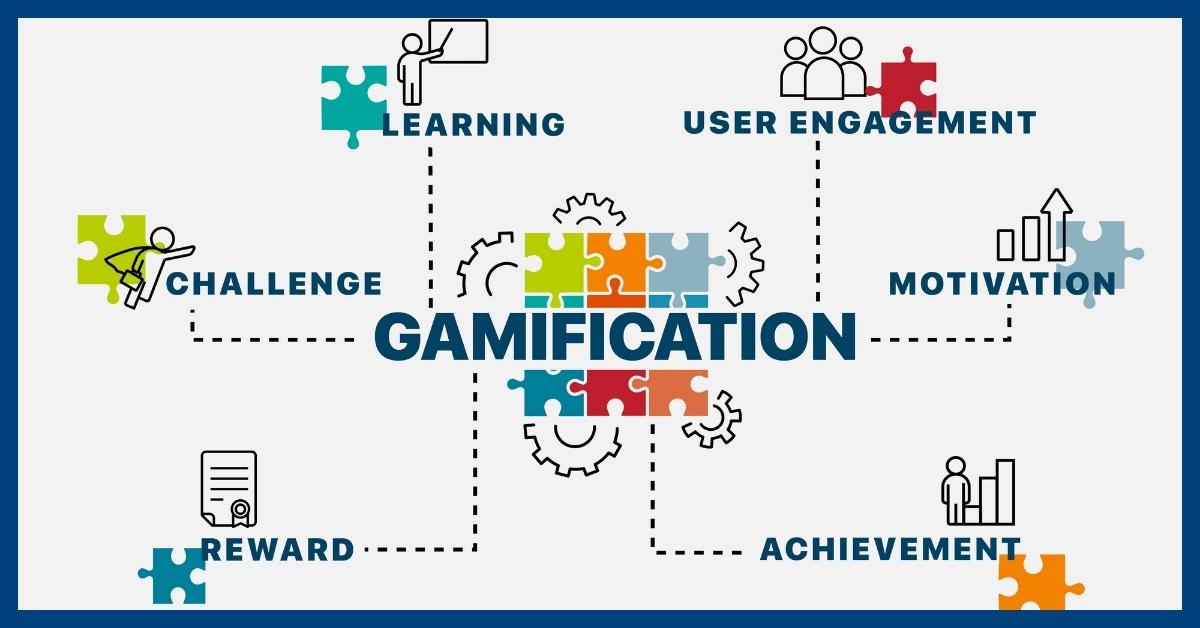Engaging Students Through Gamification
Gamification has been proven to be an effective strategy in learning over the last few decades. Numerous empirical studies published in peer-reviewed journals provide evidence to support its use. Although more research is needed to understand the benefits and best practices in design and implementation, its value has been recognized in various areas. One of these areas includes online education. Engaging students through gamification has transformed online learning experiences entirely.
Gamification and Improved Retention Rates
In the United States, nearly six million students were enrolled in at least one online class in 2018. Post-pandemic, this number has significantly increased. Virtual instruction provides students with autonomy and saves time, money, and resources. Research has shown that engaging students through gamification increased retention in online learning environments.
Gamification is the use of rewards, points, leaderboards, and tracking to encourage engagement in an activity or with a product or service. In summary, it adds game features to an environment where a game may not be present. People are intrinsically motivated by games due to the competition, achievement, success status, and collaborative component. As a result, gamification uses that motivation to improve student engagement and performance. For example, an engaging video game increases the potential for students to apply previous knowledge and problem-solving skills. This results in a willingness to learn more rigorous training material.
Key Considerations for Designing Gamification Components
In educational technology, gamification is a vital implementation strategy that motivates students to participate in learning. Specifically, gamification offers opportunities for students to recall information and apply skills. When creating or adding a gamification components to training, consider a few foundational questions:
- What is the educational need? Perhaps it is to increase learner engagement in the material, motivate, give learners the opportunity to apply knowledge and skills or track learner proficiency data.
- What should your learners be doing? In other words, are there gaps in performance or proficiency between what is already present in training and what is desired to produce an increased student outcome?
- What is the desired student outcome? As in educational design, it is essential to determine what the student must know or be able to do upon completion of the game. Understanding the answer to this question will assist in focusing the design and development of the gamification on supporting the intended student outcomes.
- What is needed to be successful? The above questions’ answers will help identify the information and skills that students should learn to encourage a successful result—a helpful hint: break down the objectives and design gamification to support them.
Exploring Different Approaches to Gamification
All things considered, this is just the beginning! There is much more to explore in the design and development of gamification such as:
- Choosing the right game type with appropriate activities
- Adding a social component
- Offering effective feedback
- Flow theory
I could write a book. As the educational landscape shifts, current students possess a new set of needs that should involve transformative strategies. Gamification, XR technology, and artificial intelligence are some tools leading the charge. It’s truly an exciting time. Evidently, innovation is inevitable!
If you want to enhance and innovate your training environment, reach out to Accelerant Solutions for our products, services, and expertise. For more insights into the future of nuclear education, explore my blog post “Five Nuclear Education Trends in 2022“.
References
Chootongchai, S., & Songkram, N. (2018). Design and development of SECI and Moodle online learning systems to enhance thinking and innovation skills for higher education learners. International Journal of Emerging Technologies in Learning. 13(3), 154-172. https://doi.org/10.3991/ijet.v13i03.7991
Chukwuedo, S.O., Mbagwu, F.O., & Ogbuanya, T.C. (2021). Motivating academic engagement and lifelong learning among vocational and adult education students via self-direction in learning. Learning and Motivation. 74, (1-12). https://doi.org/10.1016/j.lmot.2021.101729
Jayawardena, N.S., Ross, M., Quach, S., Behl, A., Gupta, M., Lang, L.D. (2021). Effective online engagement strategies through gamification: A systematic literature review and a future research agenda. Journal of Global Information Management. 30(5), 1-25. http://doi.org/10.4018/JGIM.290370
Kapp, K. M. (2012). The gamification of learning and instruction: Game-based methods and strategies for training and education. San Francisco, CA: Pfeiffer.
Navickiene, V., Dagiene, V., Jasute, E., Butkiene, R., & Gudoniene, D. (2021). Pandemic-induced qualitative changes in the process of university studies from the perspective of university authorities. Sustainability, 13(17), 9887. https://doi.org/10.3390/su13179887



